Sometimes EMI had problems to press enough records to keep up with the demand. To increase production they turned to other companies to press up some copies of a particular release, however, the majority of copies were pressed by EMI themselves.
Pressed by Oriole: “I Want To Hold Your Hand”, R 5084; “Can’t Buy Me Love”, R 5114.
Oriole had a very good pressing plant that was used by several different companies, especially EMI. Oriole pressings are usually mistaken for Pye pressings. The reason for this was that Pye had several of their hits pressed by Oriole. These are distinguishing characteristics Oriole pressing:
1. No tax code is evident in the push-out centre on either side of the disc.
2. The push-out centre has a rough texture to it.
3. There is one small ridge that’s approximately 0.5mm in from the edge of the push-out centre.
4. The gap between the push-out centre and the body of the disc is approximately 2.5mm wide.
5. The tax code can be found stamped into the deadwax at the 9 o’clock position.
6. The mother plate number is pressed directly underneath the tax code at the 9 o’clock position.
7. The matrix number is stamped at the 6 o’clock position in the deadwax.
8. There are no stramper code letters stamped into the deadwax at the 3 o’clock position.
9. The dinking around the edge of the label is twice the size of the EMI press at 2mm tall. The vinyl for these pressings is thicker and heavier than EMI or Decca pressings.
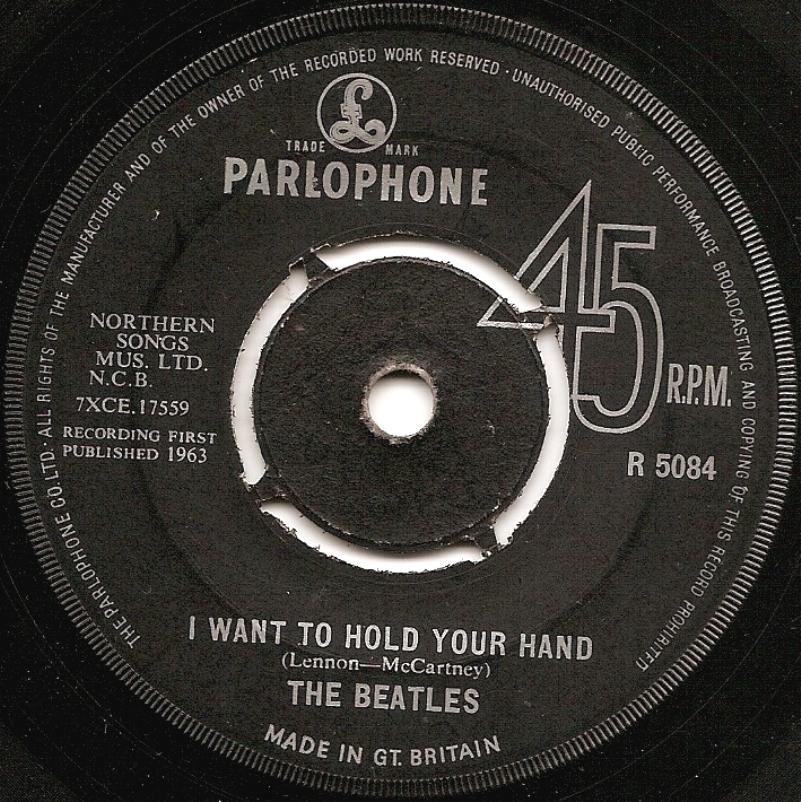
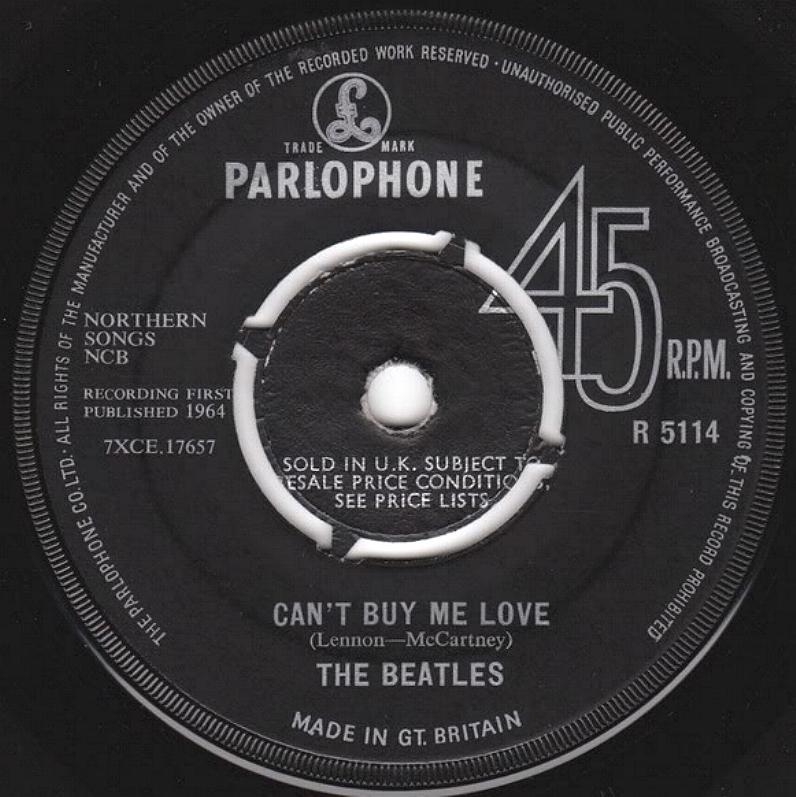
Pressed by CBS / Oriole: “I Feel Fine”, R 5200; “Hey Jude”, R 5722 (see Apple singles).
The Oriole record company had two record pressing factories, one situated in Aston Clinton and the other in Colnbrook. It lasted until 21 September 1964, when it was bought by CBS, parent of the American Columbia Records, who were looking to set up their own manufacturing facility in the UK. The result was CBS Records, and with its coming the Oriole label would be phased out. The company was officially renamed CBS Records in 1965. These are its distinguishing characteristics:
1. There is no tax code around the centre hole on either side of the disc.
2. The ridge is approximately 12.5mm out from the centre hole.
3. The gap between the push-out center and the body of the disc is approximately 2.5mm.
4. There is an outer ring on the very edge of the label (which, as a whole, is textured) that runs from the edge to just 2-3mm in. This is the only smooth part of the label. This outer ring has been highlighted in the close-up underneath.
5. The tax code can be found at the 12 o;clock position.
6. The mother plate number (either single or double figured) is at the 9 o’clock position.
7. There are no stamper code letters stamped into the deadwax at the 3 o’clock position.
8. The matrix number is stamped at the 6 o’clock position in the deadwax.
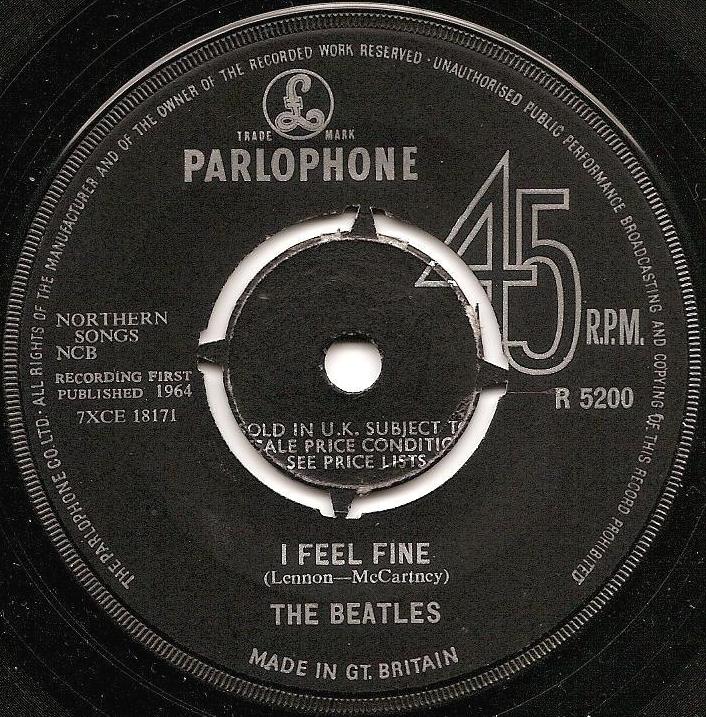
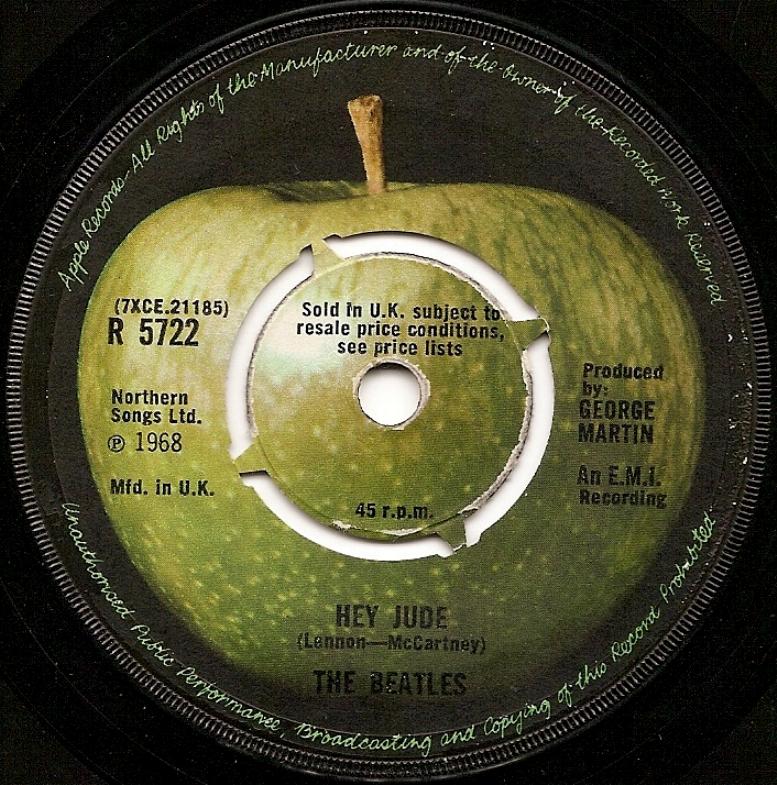
Pressed by Decca: “She Loves You”, R 5055; “I Want To Hold Your Hand”, R 5084; “I Feel Fine”, R 5200; “Help”, R 5305; “Hello Goodbye”, R 5655; “Hey Jude”, R 5722 (see Apple singles).
Decca did many contract pressings during the 60s, mainly for EMI. Typical of the Decca single is the larger space between the center and the rest of the label compared to an EMI pressing. The pressing ring of the center is also smaller and deeper on Decca pressing compared to an EMI pressing. These are distinguishing characteristics Decca:
1. No tax code is evident in the push-out centre on either side of the disc.
2. The ridge is approximately 2.5mm in from the edge of the push-out centre, or 10mm from the center hole.
3. There is a second lighter ridge that is approximately 0.5mm in from the edge of the push-out centre.
4. The gap between the push-out centre and the body of the disc is approximately 2.5mm wide.
5. The tax code on every Decca contract pressing can be found at the 12 o’clock position. “I Want To Hold Your Hand” however has the tax code pressed at the 9 o’clock position.
6. The mother plate number (either single or double figured) is pressed directly underneath the tax code at the 9 o’clock position. However, one or two very rare Decca presses have been discovered that omit this number.
7. The contract pressings did NOT utilise the BUCKINGHAM stamper codes, so there are no such letters at the 3 o’clock position.
8. The matrix number can be found at the 6 o’clock position.
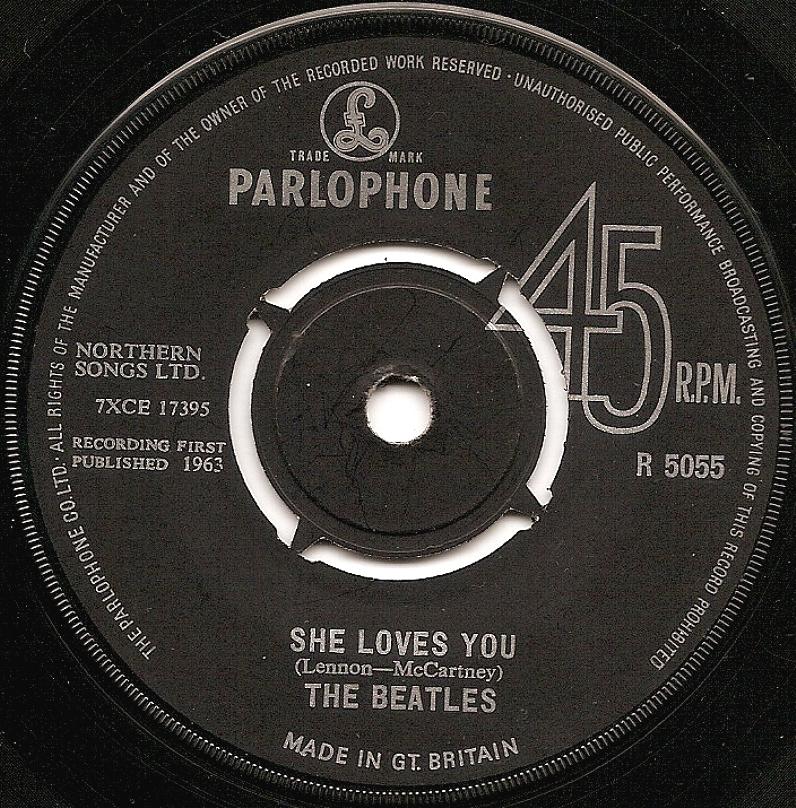
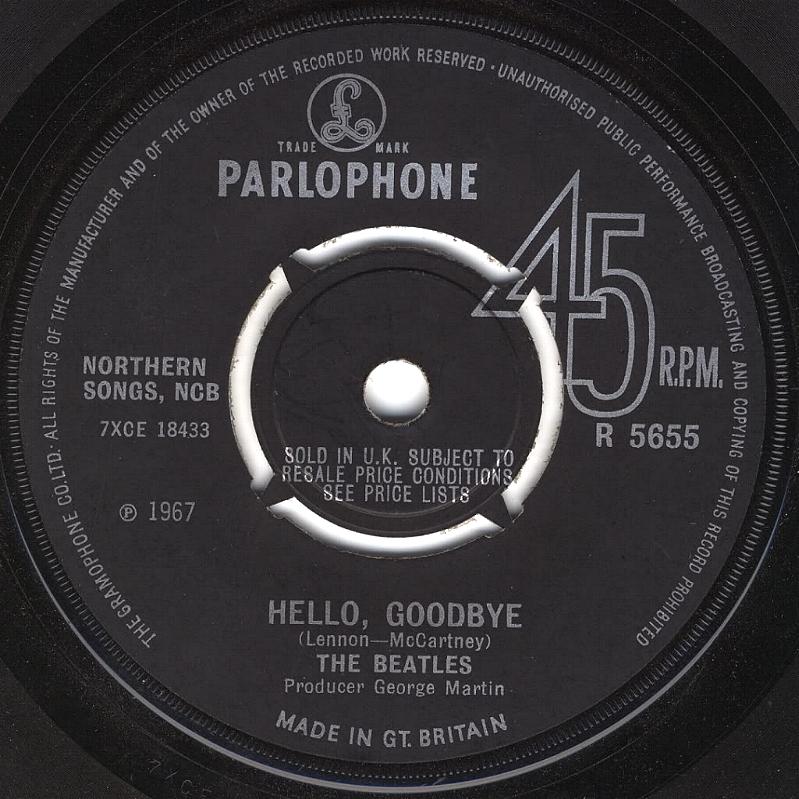
Pressed by Philips: “Hey Jude”, R 5722 (see Apple singles).
Philips did a lot of contract pressings including almost all records released by CBS before 1965. Records with push-out centers pressed by Philips are very ease to recognise because of the centers with three “spokes. These are its distinguishing characteristics:
1. There is no tax code is evident in the push-out centre on either side of the disc.
2. There is a double ridge (1mm apart) that runs around approximately 1mm in from the edge of the pushout centre. It’s 11mm out from the centre hole and approximately 28mm in from the edge of the label.
3. The gap between the push-out centre and the body of the disc is approximately 2.5mm.
4. The tax code can be found at the 12 o’clock position.
5. The mother plate number (either single or double figured) can be found at the 9 o’clock position.
6. There are no stamper code letters stamped into the deadwax at the 3 o’clock position.
7. The matrix number can be found at the 6 o’clock position.
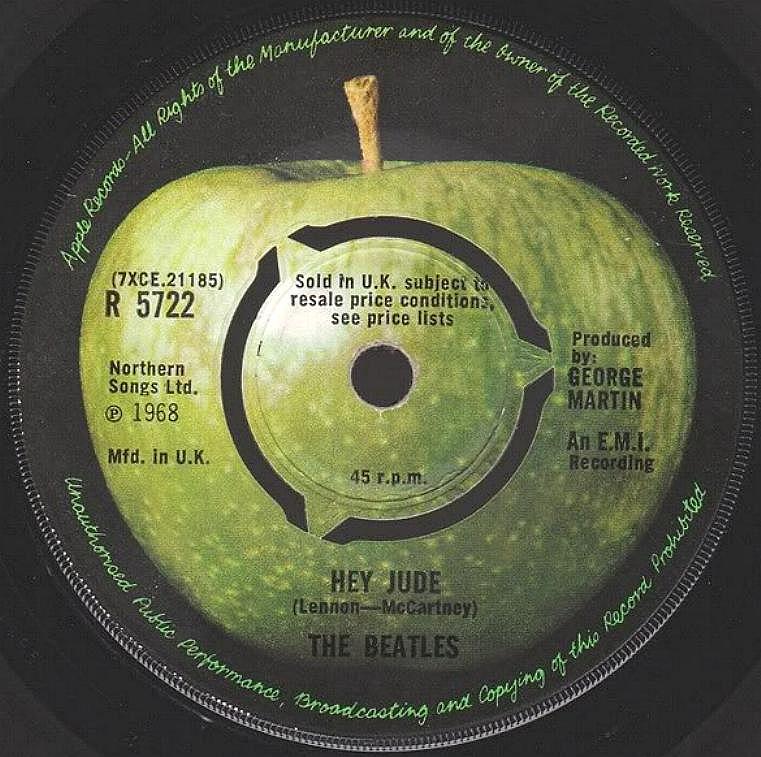
Pressed by Pye: “Hey Jude”, R 5722 (see Apple singles).
Pye probably had a limited capacity to press records, because there are a lot of contract-pressed Pye records and almost no records contract-pressed by them. However, one of the reasons why so few contract pressings by Pye have been found could be because of the similarity to Decca pressings. These are its distinguishing characteristics:
1. There is no tax code around the centre hole on either side of the disc.
2. The ridge is approximately 2.5mm in from the edge of the push-out centre or about 10mm out from the center hole.
3. The secondary ridge runs right on the very edge next to the triangular centre attachments. You can only see a second ridge at the base of these triangular shapes and *extremely* flush against the edge gap, whereas on the Decca discs this ridge is clearly visible around the extreme edge rim of the pushout section. This is consistent with all Decca and Pye discs.
4. The gap between the push-out centre and the main body of the disc is approximately 2.25mm.
5. The tax code can be found at the 12 o’clock position.
6. The mother plate number (either single or double figured) is at the 9 o’clock position.
7. A hand-etched letter has been scratched in at the 3 o’clock position. This does NOT appear on the Decca contract pressings.
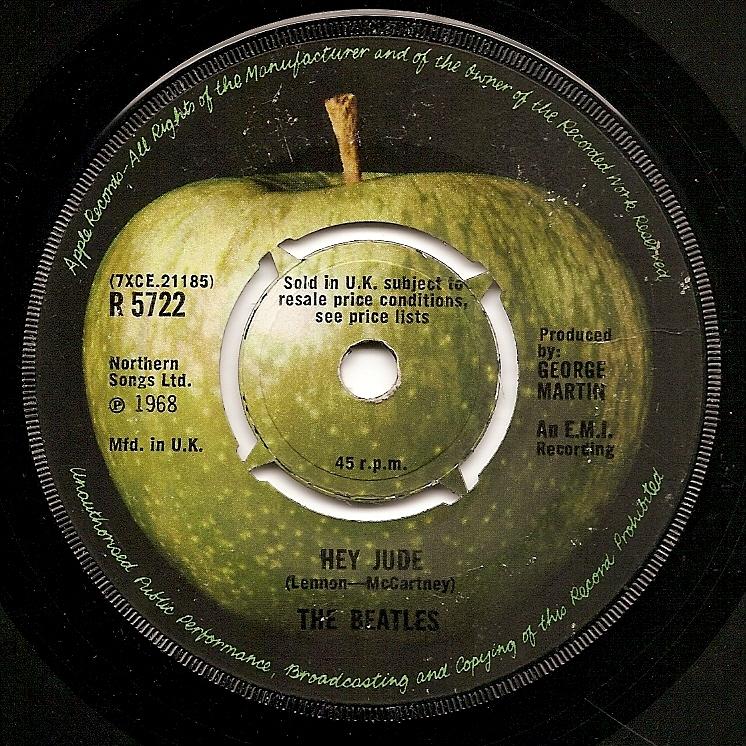
P.S. All EMI singles with solid centers pressed before 1966 are contract pressings.









 RDF URL
RDF URL